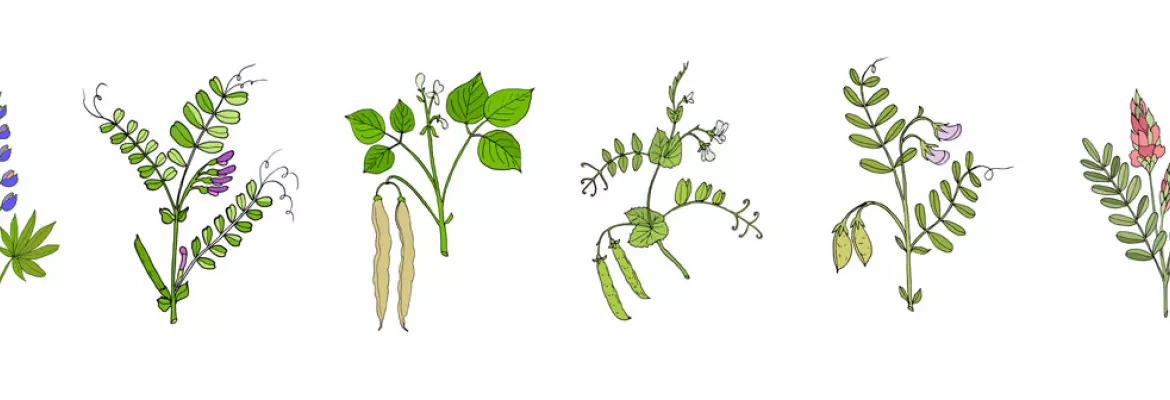
The legume family is well known for its capacity to absorb nitrogen from the air through symbiotic interaction with mycorrhizae. When legumes are destroyed, this easily mineralised organic nitrogen is released for the next crop. They can also be used as nitrate-fixing intermediate crops, because they absorb nitrogen from the soil too. There are a few recommendations, however, to ensure that the result obtained is in line with the nitrate-fixing objective.
Planting legumes as nitrate-fixing intermediate crops: an option to consider
Nitrate-fixing intermediate crops fix nitrogen in the soil which prevents water pollution. Legumes primarily take in atmospheric nitrogen. However, they also absorb N from the soil, especially:
- In the early stages of growth.
- Certain faster growing species, such as pea, or common vetch.
- If the symbiotic interaction is not fully effective.
- In high-absorption species.
Absorption can be as high as 50 kgN/ha (equivalent to phacelia or oats). This is comparable to other species of nitrate-fixing intermediate crops. However, other plant families are more effective against residues in drainage water, especially crucifers, such as mustard, which fixes more potentially leachable nitrogen than legumes. According to some figures, the agronomic efficiency of legumes, in terms of nitrate fixing, is twice as low as other families.

Legumes fix nitrogen in the soil better when they are well developed
There is one essential factor for legumes to fix nitrogen in the soil effectively: they need to be well developed. In terms of biomass, vetch, field bean and field peas seem to give better results than nitrate-fixing intermediate crops like mustard, radish or phacelia. However, trials have shown that when sown 3 weeks later than usual, their biomass is halved.
It is, therefore, vital to take care when planting.
The essential factors are:
- Seeding depth
- Seeding date
- Destruction date
Seeding depth, especially in dry conditions. It depends on seed size, which can be quite large, especially for clovers, field beans and peas. For Seeding date, It is necessary to seed early, because legumes are slower to develop than other families often used, such as mustard and phacelia. In addition, they often need warmer temperatures and longer days.
Destruction date: to reduce nitrogen residues as much as possible, it is recommended to let plants grow as big as possible. That’s why they should be destroyed as late as possible. It is also for this reason that legumes (one species or mixed) are recommended for long intercropping periods.
Choosing legume species to plant as nitrate-fixing intermediate crops
Different criteria are involved in choosing nitrate-fixing intermediate crops, including seed quantity, seed and planting costs, expected biomass production, the purpose of the cover crop, destruction method, etc.
The species’ capacity to thrive when mixed with other species should also be taken into account. Indeed, when mixed (with grasses or crucifers, for instance) legumes are as effective as traditional nitrate-fixing intermediate crop species.
